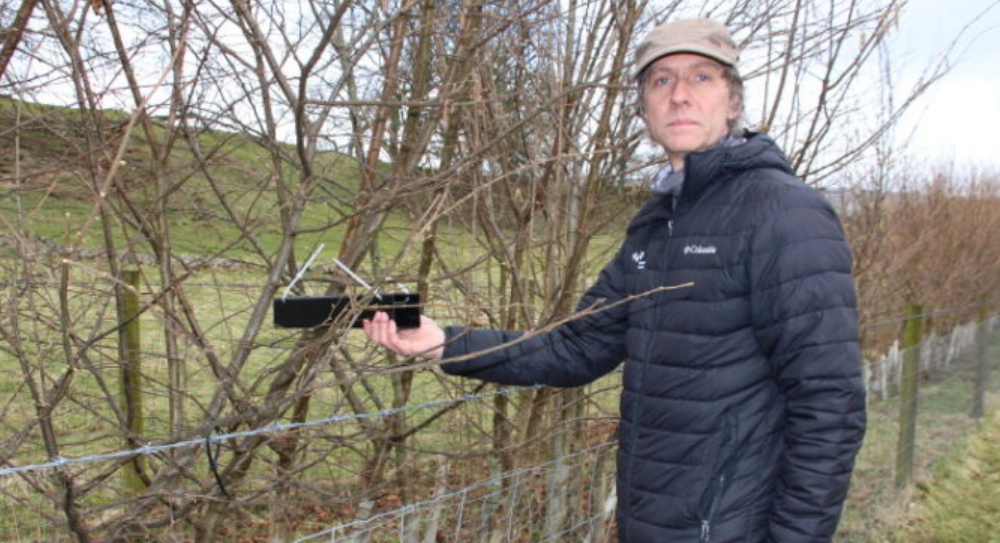Rewilding: Hedge highways and restored woodlands aim to boost hazel dormouse populations in Yorkshire Dales
Wensleydale Dormouse Project aims to help reintroduced rodents expand current stronghold

A six-mile stretch of hedgerows and woods in the Yorkshire Dales have been improved and connected in an effort to create better habitat for the UK’s endangered hazel dormouse.
Hazel dormice were once widespread throughout woodlands across the UK, but over the last 100 years have seriously declined and became locally extinct in Yorkshire until reintroduction programmes in the early 21st century.
The planting of hazel hedgerows and woodland management at Freeholders’ Wood, near Aysgarth Falls in Wensleydale, where a population of mice were reintroduced in 2008, aims to make the area an ideal habitat for the species, helping it establish a stronghold and expand into the surrounding area.
Farmers and landowners have planted brambles – which is often considered a thorny nuisance and stripped out of hedges and scrubland – in order to provide the mammals with late season fruit.
The hazel dormouse, also known as the common dormouse, are tiny rodents – measuring just six to nine centimetres long and with a tail of a similar length. They weigh around 40 grams and spend up to seven months of the year asleep.
The UK population is in serious danger, with numbers estimated to have fallen by 52 per cent since 1995, according to The Woodland Trust.
Researchers will monitor the success of the project. Tubes containing inked pads have been hung in the hedges which will track how far the dormice spread out from their Aysgarth stronghold, while wooden nesting boxes are also being left in places where the mice can use them.
“Local people have really taken to hazel dormice,” said project officer Phill Hibbs.
“School children at Bainbridge studied them during lockdown, so they’ll know that the dormice are about to wake up from their winter torpor, while local landowners – particularly Stuart Raw at Hollins Farm and Tom Orde-Powlett of the Bolton Estate – have enthusiastically supported the work.”
Over three years more than 12 kilometres of existing hedgerow was surveyed, with a quarter of it brought into more appropriate management. Almost two kilometres of new hedgerow was planted. Ten woodland areas, covering more than four hectares, were also brought into appropriate management.

The loss of ancient woodland and hedgerows across the UK is thought to be a major reason for the decline in dormouse numbers as the mice will not leave the safety of trees to cross large, open spaces. This means populations become isolated, lose genetic diversity and are therefore more vulnerable to extinction.
The impacts of the climate crisis is also a major threat to dormice. As winters become milder, warmer temperatures disrupt the species’ hibernation cycle, meaning they can wake early when sufficient food isn’t available.
Describing some of the strategic changes made to the woodlands on Hollins Farm in Wensleydale, Mr Hibbs said: “This woodland had shrunk to a few mature ash, sycamores and hawthorns. About 15 years ago it was underplanted, but the rabbits got in and knocked it all back.
“To put it into good management, we’ve secured all the boundaries and added tree stock, going heavy on the hazel, the primary tree the dormice would use, as well as rowan, hawthorn, blackthorn and holly – and dog rose, bramble and honeysuckle to get a longer fruiting period – giving dormice access to berries and nuts.”
He added: “These small woodlands are stepping stones for the dormice as they go down the dale.”
Funding for the project was provided by People’s Trust for Endangered Species, Yorkshire Dales Millennium Trust and the Woodland Trust, as well as the National Park Authority.
Join our commenting forum
Join thought-provoking conversations, follow other Independent readers and see their replies
Comments
Bookmark popover
Removed from bookmarks